Text
Daemon Au guide
Daemon AUs were inspired by the book series His Dark Materials, by Philip Pullman. You might have watched the movie The Golden Compass, or the tv show His Dark Materials. Pullman himself was inspired by the ancient greek practice of daemonism.
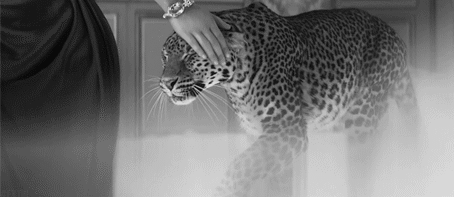
Daemon AUs got popularized in fanfic following the books, since they are essentially about talking animal familiars. Thinking of that, I decided to make this guide, to inspire new ideas for your fandoms and fics
Here's some trivia from the series, which you can pick and choose from at your own tastes when making your AUs.
- Daemons are the physical manifestation of a person's soul.
- A daemon's personality is influenced by their human's subconscience, and is often a balance of the human's personality. For exemple, someone more outgoing might have a daemon who is more shy.
- When you're kids, it changes forms between various animals. As you mature into adulthood, it settles on a single one and never changes again. The age can vary from individual, but it's a milestone of growing up.
- The species of the animal they settle as is a metaphor for their person's personality. You can make much symbolism about that.
- Daemons have more fantasy-sounding names that are very different from human names, and often have lots of meaning.
- The parent's daemons name the child's daemons.
- Daemons are usually the opposite gender as their human, but that is not a rule.
- Daemons can talk. Their main role is to talk to and advise their humans.
- Daemons will usually only talk to their humans or between other daemons, but it's not forbidden for a daemon to talk to another human.
- They are not actual animals, and therefore not driven by animal instincts, but they can have animal abilities like hearing, smelling, etc.
- Daemons can't be too far apart from their humans, they walk together at all times.
- When you hurt a daemon, it's human feels the same pain, and vice versa.
- When you kill a daemon, it's human also dies, and vice versa.
- It's the biggest taboo in the series to touch a daemon who is not your own - but sometimes the AUs adapt it to being lesser degrees of serious, or to mean a shared moment of deep intimacy. You can decide what it means for your AUs.
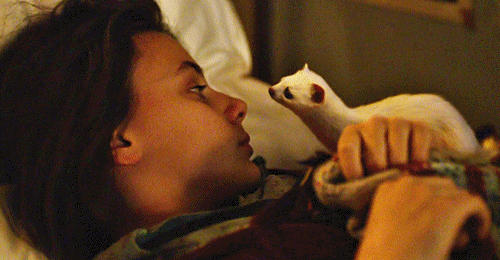
Attention: from here on, the list is heavily taken from the books' lore and worldbuilding, so it may contain spoilers.
- The HDM series has a multiverse that can be travelled across, and the world where people have daemons is only one of those universes.
- Characters from worlds without daemons will get their own if they travel to one who has.
- Daemons, are made of Dust - the most basic subatomic particles that also constitute the universes, and they grant sentience and drive to living beings. When when they die, the daemons scatter away into a pile of Dust.
- There is a ritual that makes it possible for people to walk apart from their daemons. In the series, the Witches do it as a tradition, even if it's described as being very emotionally painful. But then once it happens it's over, though.
- Another way to do it is separating from your daemon while a living person at the Land of the Dead - the dimension all people go when they die, and where daemons are not allowed.
- The ritual of separation is different than cutting off someone's daemon. In this case, the soul is separated from the body, rendering both human and daemon mindlessly traumatized, never able to be a full, complete being again.
#book stuff#daemonism#his dark materials#the golden compass#daemons#aus#tropes#fic ideas#au ideas#ideas#reference#fanfics#fandom#sfw#blorbos#blorbo from my shows
311 notes
·
View notes
Text
Please send me posts explaining daemonism so I can add to this blog!
0 notes
Text
Daemonism
Daemonism is the act of cultivating your subconscious, or subsets of your subconscious voice in to a mental characterization by assigning it a name, and form. Dæmons are connected to, and are like imaginary friends, but that represents the hidden, and suppress parts of you. They are not separate from you, but are simply another part of you that is hidden, but now is allowed to express itself through a certain persona. Dæmons act as mental companions, friends, the voice of reason, and the devil’s advocate in your mind, and can play a very important part in your life. Somebody that has a dæmon, and practices daemonism is referred to as a dæmian.
The word dæmon comes from the Greek word “daimon” meaning spirit, divinity, god. or supernatural being. When we are using the word dæmon in daemonism we are not referring to spirits, or hellborn demons, and are much rather talking about the concept of dæmons as they appear in daemonism. In order for the word dæmon not to be confused with the other form of the word demon, the word dæmon will usually be pronounced as “Day-mon”. The reason that they are call dæmons in daemonism is, because of dæmianism’s connection to the series His Dark Materials, and is sort of a tribute to the concepts seen in it. His Dark Materials was a trilogy of fantasy novels, and a movie in which daemons were literally physical manifestations of a person’s soul in animal form. This helped to popularize the practice, and the terminology of daemonism. This practice is also connected to the work of psychologist Carl Jung who thought we could learn a lot from listening to our inner voice of our subconscious. He gave us the concept of the “shadow” or “shadow aspect” which were suppressed aspects that everyone possess. Another thing that he gave was the concept of the animus, and the anima. The animus being the hidden masculine part of us, and anima being the hidden feminine part of us.
You will usually choose to have a dæmon, and from that then you can go looking for your subconscious side to unlock it, and give it a name, and a form, so that you can make it your dæmon. Dæmons can also be brought up because of stressful times, and that starting process can begin your journey into dæmianism. The dæmon is a piece of your inner voice, and exist only within your mind. It will first start out as just that little voice that shows up from time to time, but as you acknowledge it and give it its own personality, name, and form, it will eventually become something much greater. It will be an aspect of your subconscious, that is usually hidden from you that you will get to learn more about because of your personification of it. Imaginary friends a lot of the time are also considered to be dæmons, and are usually the first experiences a lot of people have with their daemon. Daemon’s are always with their dæmians, and can never be separated from them, because they are a piece of their subconscious. Dæmians will usually only have one dæmon, though multiples have been reported at times. The dæmon most of the time will take an animal form. It is said this is done because it is usually easier to connect to an animal as a companion than another human, and the animal form will usually symbolize something, that can tell you alot about the daemian, their personality, and the hidden side of them. This is because it is connected to your subconscious, and it will take the form of that best symbolizes the hidden form of yourself based on your knowledge, and experiences.
Once you start working with the dæmon, the demon will eventually reach what is called a settled form, and will have all of its attributes, personality traits, gender, name, and other traits pretty locked into place, if their daemian it’s fixed into their adult personality. This is because the subconscious, and suppressed parts of a child’s experience are a lot more likely to change then an adults, but changes do sometimes occur in certain circumstances. Usually between the ages of 13, and 20 is the time when your demon will be more settled in a specific form rather than the unchanging, and unpredictableness of the younger children’s dæmon. Big life changing events can usually switch the form of the dæmon, and may even change its personality, but these events have to be very impactful, and significant.It has also been noticed that a dæmon will usually have the different, or opposite gender than their dæmian. Dæmians with dæmon that are the same gender are in the minority. Dæmon, and their dæmians also usually have personalities that work well together, and are not too different, and are not exactly the same. Your demon does not automatically start with a name, but it can be given one by you or it will tell you something that fits it from your subconscience. The demon will always have choice in the naming and it will usually come out to something that is pretty unique, and personal. This name can also be use in order to separate your voice from their voice, by referring to their voice as the name.
A dæmian will only be able to see their demon in their imagination, and would be able to project that image onto the physical world, so that they could see them in real time. Nobody else is able to interact with a dæmon besides the dæmian that the dæmon belongs to. This is because the dæmon exists within the mindscape of the dæmian, and does not have a physical, or energetic form. The dæmian will also be able to talk to their demon much like they are talking to themselves allowing them to get insight on their subconscious, and allowing them to recall information they might have almost forgotten. Everyone has a dæmon, and everyone can find their demon. It is just a matter of if you want to unlock that part of yourself.
2K notes
·
View notes
Text
Tag Finder
Click the tag below for what you want to see
1 note
·
View note
Text
*Infomercial voice*
Tired of being all alone during the pandemic?
Bored in quarantine with nothing to do?
Introducing your one-stop-shop to taking the isolation out of solitude!
D-D-D-DAEMONISM!!!
That’s right, DAEMONISM! This free trial comes with a physical manifestation of your subconsciousness, including MUST-HAVE FEATURES such as:
- KILLING TIME form-finding on the daemon forums!
- HAVING FUN meeting your daemon and other daemians!
- ARGUING about what to have for dinner!
- An entire extra voice COMPLAINING about being stuck inside!
Getting started is EASY! Just open your internet browser and head on over to the daemon forums analysis index to get started today! NO PURCHASE NECESSARY!
AND THAT’S NOT ALL!
Call now, and for the low low price of just a tiny bit of your sanity, you will receive a FREE DAEMON when you get started! That’s right, call now and discover a FREE DAEMON!
Start DAEMONISM today!

331 notes
·
View notes
Photo
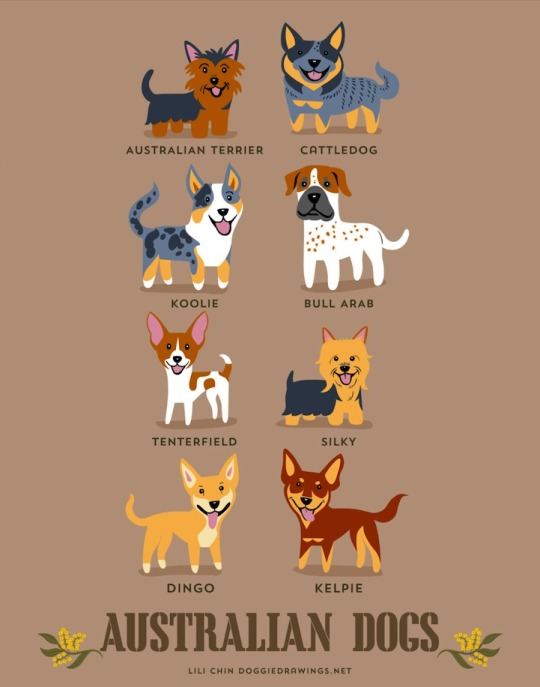
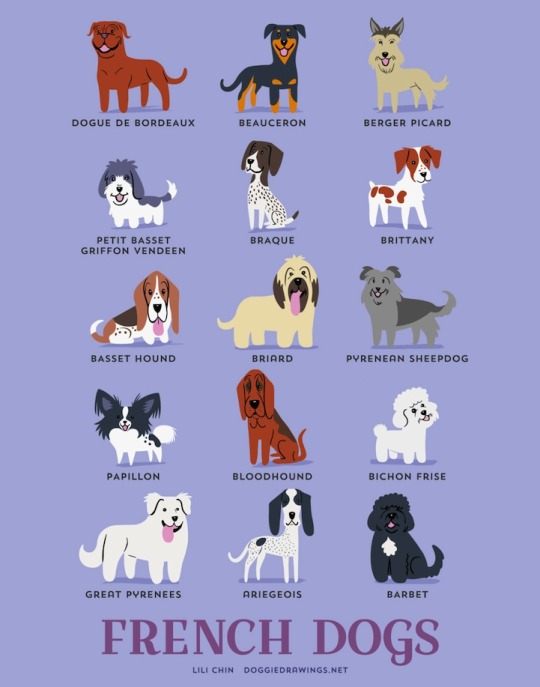
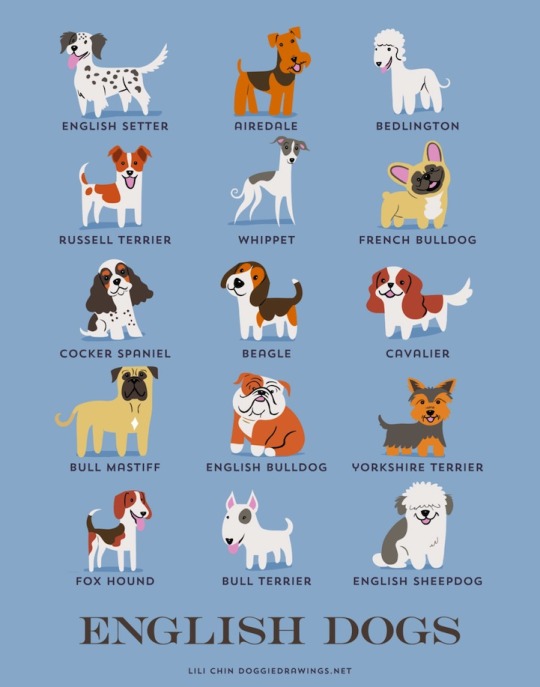
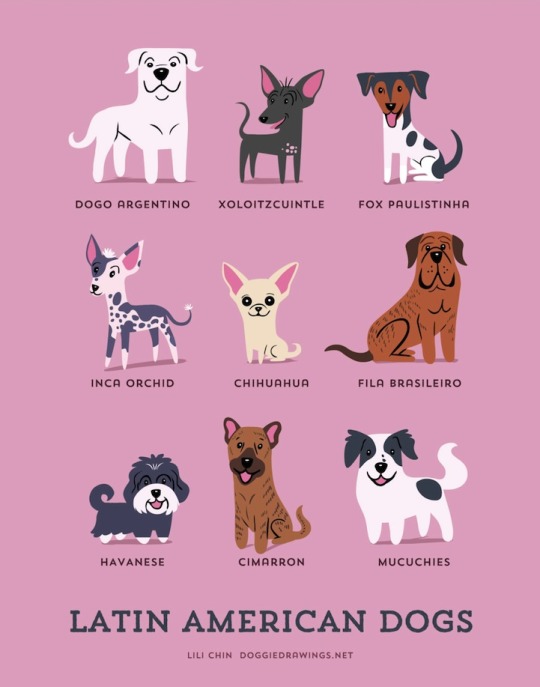


Illustrator Lili Chin’s adorable series Dogs of the World illustrates 192 breeds of dogs grouped according to geographical origin.
900K notes
·
View notes
Photo





Animal Symbolism: The Moth
Moths comprise a group of insects related to butterflies, belonging to the order Lepidoptera.
“The nocturnal butterfly. In ancient cultures, the moth represents a form of the psyche, or the soul immortally trapped in the hellish death realms”.
- The Mothman Prophecies (2002)
4K notes
·
View notes
Note
Naming daemons is so hard how dooooo???
Lots of different ways!
The basic approaches I go with are:
1) Totally normal name, for a human or for a pet. In canon, Lee Scoresby’s daemon’s name is Hester, Serafina Pekkala’s is Kaisa, Ruta Skadi’s is Sergi, and one of the severed children had a daemon who was flat-out named Ratter.
In the HDM-universe fic I’ve been writing lately, the daemons of the Jewish characters have normal (if old-fashioned) names taken from the Tanakh: Ahisamach, Zephaniah, and Tirzah. Maureen’s daemon is named Dalziel, which looks like it should be the name of an angel, but is in fact a Scottish clan. This hasn’t been mentioned in-story yet, but the Li Huas’ daemons are both named Sapphire.
2) Classical, literary, or historical inspiration. In canon, Pantalaimon is from the Greek name of Saint Pantaleon, and one of the children from the world of the dead has a daemon named Castor. (These can overlap — for instance, Sergi might have been chosen because it’s a modernized form of Saint Sergius.)
In fic, Eustathias (Dana’s daemon) is from the Greek name of Saint Eustace. Vanessa’s daemon is another that hasn’t come up, but his name was Orestes.
3) An evocative foreign-language word. In canon, Will’s daemon gets named Kirjava, a Finnish word for “many-colored.” Lord Asriel’s manservant has a daemon named Anfang, German for “start/beginning.”
In fic, a bunch of the daemons have names based on Hebrew words: Khoshekh (darkness), Bedamim (blood), Tehom (the abyss), Neharah (daylight).
4) Start with a target language, mess around with names and parts of speech until you find something that sounds right. Can’t speak for Pullman, but that’s where I got a bunch of names. Josie’s Ojansi has a name thrown together from Finnish syllables; Köhler’s Rozarilde is very German; Henriette’s Clotère, very French. Carlos’s Isaña was named after spending a while in Spanish-language recipe sites.
(Very important to google names like this before using them, to make sure you haven’t accidentally stumbled on a word that means something. You don’t want to be unintentionally scandalous and/or hilarious.)
5) Online fantasy name generators ftw. You don’t need to go to a lot of effort every time, or make every name meaningful. Take your pick of all the generators Google has to offer. I resorted to those for Steve Carlsberg’s Taeminlahn, Renée Carlsberg’s Tovitthae, and Megan Wallaby’s Isidorus.
Final note: Daemon descriptions are more important than names!
HDM has dozens of daemons whose names were never mentioned. Not just background characters, but significant ones like Ma Costa, Charles Latrom, the Master of Jordan, all the way up to Mary Malone and Mrs. Coulter.
That’s because the fewer names you include, the easier it is for a reader to keep up. And if you refer to the daemon by their species and/or the human they’re associated with, you take the burden off your audience of tracking those things too. It’s way simpler and quicker for readers to parse “the golden monkey held Sir Charles’s snake daemon” than “Omuvaryx held S’ctarhaclign.”
(Especially if you never gave your readers a description in the first place. I can’t tell you how many daemon AUs I’ve read that go “Jon came over for lunch with Linicembes. Stephen and Rilleusthi were happy to see him. Olivia called, and Italene said hi too.” And it’s only when you get to the author’s notes at the end that it says “by the way, Linicembes is a fox, Rilleusthi is a ribbon-tailed astrapia, and Italene is a cicada.” Aaaargh. Don’t be that writer!)
So if coming up with names is annoying or taxing, just remember that any given daemon only needs a name if the narrative would get noticeably awkward without it.
282 notes
·
View notes
Photo



Series: What Dæmons Mean
Birds
The Master+Raven | Ma Costa+Hawk | Old Lady at Party+Scarlet Macaw | Tony Costa+Hawk | John Faa+Crow | Old Tillerman+Cormorant | Jerry+Seagull | Serafina Pekkala+Goose | Priest’s Maidservant+Chicken | Priest+Pelican | Sister Betty+Bird | Unnamed Witch+Tern | Steersman+Seagull | Cardinal Sturrock+Macaw | Ruta Skadi+Bluethroat | Juta Kamainen+Robin | John Parry+Osprey | The Skraeling+Snowy Owl | Lena Feldt+Snow Bunting | Ama’s Father+Raven | Teukros Basilides+Nightingale | Semyon Borisovitch+Crow | Mary Malone+Alpine Chough | Yelena Pazhets+White-rumped swift? | Victoria Lund+Swallow | Mikhail Vassiliev+Robin | Ivan Poliakov+Hawk | George Papadimitriou+Greenfinch | Two Lovers+Small birds | CCD Man + Crow | Mrs Carpenter+Duck | Professor Gunnar Hallgrimsson+Robin | Mr Taphouse+Greenpecker | Dibdin+Tropical Bird | Headmaster+Crow | Mr Croker+Green Woodpecker | Environmental Protection Agent+Robin | Bud Schlesinger+Small Owl | Doris Whicher+Crow | Tilda Vasara+Arctic Tern

Conclusion: Birds form the largest single-species group of dæmons in canon, and the one thing nearly all the people in that group have in common is that they are primarily ruled by Thought before, or rather than, Deed (something they share in common with the other big group of non-mammalian dæmons, see: reptiles)
These are people defined by what they Know, or Think, rather than what they Do; their chief ruling principle is intellectual curiosity, whether it’s about witchcraft, academia, or spirituality.
The ‘wildness’ of a cat or dog dæmon indicates the dangerousness/violence of their person, so that the more wolfish or leonine the dæmon, the more dangerous the owner. In bird dæmons, however, it seems that violence is indicated by colouring. The robin-dæmon and bluethroat-dæmon’d witches are both described as passionate killers; Yelena, the witch who performs a cowardly trick, has a dæmon with a white rump; Cardinal Sturrock’s macaw dæmon is equally unmoved by Mrs Coulter’s rage and by human torture. Whereas the monochromatic birds; the all-black, -grey, -brown, or -white; belong to people who are sensible, mild-mannered, or easy-going.
Meanwhile, the more ‘raptor’-like the bird species of dæmon, the more tenacious the mind. Ma Costa apparently passed on her powerful curiosity to her son Tony, since they both have hawk dæmons; Ivan Poliakov (also with a hawk dæmon) is canny enough to bend a small-town election to his own purposes; and the Snowy Owl dæmon’d Mageristerium Agent who tries to kill Lee Scoresby is so devoted to the ‘truth’ (as he sees it) that he’s willing to die to protect it. (A snowy owl is also the form Pantalaimon took, when he and Kirjava were in bird-form.)
And, of course, John Parry, the ‘Asriel’ of the bird-dæmon owners, is described as having a sense of curiosity “as powerful as a wolf’s jaws.” His devotion to the scientific method was so relentless that he even used his own injury as an opportunity to test the effectiveness of bloodmoss, “taking his temperature, watching the scar form, making notes on every damn thing…”
*Sidenote: Will’s Kirjava takes the form of a nightingale when she is a bird, though her final form is a richly-furred cat, similar to Farder Coram’s Sophonax. The only other nightingale dæmon in canon belongs to Teukros Basilides. Like Farder Coram he is a wise scholar, a servant of a Lord (Asriel is his ‘John Faa’), and has an understanding of alethiometers. I would thus hazard a guess that beautiful song is a bird-dæmon’s equivalent of a beautiful or richly-hued coat; which, judging by the commonalities of Farder Coram and Will’s personalities, would seem to indicate a certain nobility of character.
[ see also: corvids ]
110 notes
·
View notes
Text
heavenly words
aliferous: (adj.) having wings
apricity: (n.) the warmth of the sun in the winter
aspectabund: (adj.) letting emotion show easily through the face or eyes
aurora: (n.) dawn
balter: (v.) to dance gracelessly, but with enjoyment
cafune: (n.) the act of running your fingers through the hair of someone you love
catharsis: (n.) release of emotional tension
charmolypi: (n.) a mixed feeling of happiness while being sad
diaphonous: (adj.) light, translucent, and delicate
dulcet: (adj.) sweet
ephemeral: (adj.) fleeting
ethereal: (adj.) extremely delicate and light in a way that seems too perfect for this world
eutony: (n.) the pleasantness of a word’s sound
halcyon: (adj.) a period of time in the past that was idyllically happy and peaceful
illecebrous: (adj.) enticing
irenic: (adj.) promoting peace
kalon: (n.) beauty that is more than skin-deep
kalopsia: (n.) the seeing of things as more beautiful than they actually are
lacuna: (n.) a blank or missing part
lilt: (n.) a pleasant gentle accent
ludic: (adj.) full of fun and high spirits
meraki: (n.) to do something with love or soul
nefelibata: (n.) cloud-walker; one who lives in the clouds of their own imagination
nepenthe: (n.) something that makes one forget their sadness
nubivagant: (adj.) wandering in the clouds
numinous: (adj.) feeling fearful yet awed and inspired
orphic: (adj.) beyond ordinary understanding
pyrrhic: (adj.) won at too great a cost
pulchritudinous: (adj.) breathtaking, heartbreaking beauty
scintilla: (n.) a tiny trace or spark of a feeling
selcouth: (adj.) unfamiliar, strange, yet marvelous
sirimiri: (n.) a light drizzle of rain
susurrus: (n.) whispering, murmuring, or rustling
sweven: (n.) a dream
temerate: (v.) to break a bond or promise
viridity: (n.) innocence
yonderly: (adj.) absent-minded
148K notes
·
View notes
Text
Hey y'all, I found this excellent tumblr with thousands of name ideas organized by theme. If you can't think of a name for your daemon, or the ones in your daemon AUs, give it a look!
25 notes
·
View notes
Text
Tho tbf. I am being a bit of a hypocrite about Daemon names. As I got kinath from a fantasy name generator.
14 notes
·
View notes
Photo




Series: What Dæmons Mean
Mustelids
Lyra Belacqua+Pantalaimon(Pine Marten) | Jacob Huismans+Ferret | Villager+Wolverine | Samoyed Hunter/Kidnapper+Wolverine | Bolvangar Man+Badger | Old Tartar/Headman+Wolverine | Unnamed princess+Weasel | Mrs Polstead+Badger | Axel Löfgren+Ferret | Arnold Hemsley+Ferret | Environmental Protection Agent+Otter | Mrs Simkin+Ferret
(5/12) Tenacity/Determination.
(4/12) Curiosity
(5/12) Physical courage/defiance.
(4/12) Duplicity.
Conclusion: to understand the owner of a mustelid-dæmon one need look no further than their claws; mustelid dæmons belong to those who dig in and refuse to let go until they succeed. They would be the people most likely to stamp their feet, shake their fists, or spit in their faces of their enemies. They are, in a word, dogged. Their curiosity and determination makes them good look-outs, spies, or scouts (since they’ll be determined to return with whatever information they have gathered).
82 notes
·
View notes
Photo








Series: What Dæmons Mean
Dogs
Wren the Butler+Dog | Cawson the Steward+Red Setter | Thorold+Pinscher | Roger Parslow+Terrier | Mrs Lonsdale+stolid Retriever | Old Man+Spaniel | Sentry+Husky | Tartar/Sibirsk Soldiers+Wolves | Sister Clara+little white dog | Sentry at Asriel’s Fortress+Terrier | Guard+Pinscher | Van Breda+wolfish mongrel | + honourable-mention for Pantalaimon’s Wolfhound form | George Boatwright+wolfish Staffy/AlsatianMongrel | Grey-haired Old lady+Terrier | Passing Man+Dog | Sister Katarina+Pug | Sour-faced Man+Mastiff
(7/17) Servants/Servers
(4/17) Guards/Sentries
(?/17) Soldiers
Conclusion: dog-dæmon owners are dutiful and happy to please. Gun-dog dæmons in particular make for good servants, (it seems that the silkier the fur, the cushier the job they will gravitate to). Perhaps unsurprisingly, the owners of guard-dog dæmons make for good sentries, and wolf-dæmons take that canine obedience to extremes since they are willing to kill under orders. Pan turns into a wolfhound when he is a dog, and Van Breda’s dæmon is described as ‘wolfish’ when he’s about to lash out at Lee Scoresby, so it seems that the more wolfish the dæmon, the greater the likelihood that their owner will be willing to resort to violence.
46 notes
·
View notes
Photo






Series: What Dæmons Mean
Primates
Mrs Coulter+Golden Monkey | Dame Hannah Relf/Miss Greenwood+Marmoset | Lord Thomas Nugent(Man in Top Hat)+Black-and-white Lemur | Bolvangar Man+Baboon | Engineer at Asriel’s Fortress+Brown monkey
(4/6) Child-like (connected with children in some way; can make children trust them.)
(3/6) Cunning (both as in crafty and in the sense of ‘curiously wrought;’ connected with mechanisms; Mrs Coulter employs clockwork bugs and wrote ‘The Bronze Clocks of Benin.’ )
(3/6) Curiosity (show a marked physical curiosity/nosiness.)
Conclusion: primate dæmons belong to tinkerers; people who retain a child’s sense of curiosity, and are fascinated by (and have a gift for understanding) the inner workings of things; be they people, organisations, or machines.
68 notes
·
View notes
Photo


Series: What Dæmons Mean
Foxes
Kidnapper+savage-looking fox | Old Man with Lantern+Arctic fox | Annie the red-haired girl+Kyrillion | Umaq, Tartar Dog-sled Driver+Arctic fox | Lieutenant Haugland+Arctic fox | CCD Man+Fox | Dr. Adnan Al-Kaisy+Desert Fox | Wiry Servant+Fox
(6/8) Intrepid (display a bold willingness to put themselves in danger.)
(6/8) Dutiful (help strangers, even though it’s difficult/dangerous.)
(6/8) Not afraid to get their hands dirty (have or volunteer to do mucky/unpleasant/dangerous jobs.)
(5/8) Singular/solitary (appear to be isolated/acting alone/independent of others.)
(6/8) Wise (display shrewdness, obscure knowledge, or insight)
Conclusion: a fox dæmon seems to denote someone who has a unique blend of the cat-dæmon’s cool independence and nerve with the dog-dæmon’s sense of duty. Unlike dog-dæmons they do not serve, but aid. They could almost be described as a Wolf-Dæmon Lite; not quite willing to kill under orders; dutiful, but too singular to follow the pack. They may be what a dog-dæmon would be if dogs were solitary creatures.
57 notes
·
View notes
Photo




Series: What Dæmons Mean
Serpents
Old Master+basilisk | Lord Boreal+green snake | Martin Lanselius+green snake | Jotham Santelia+green snake | Pierre McConville+rattlesnake
(4/5) Are the guardians of secrets/privileged information.
(4/5) Comfortable living in remote places / on the edges of civilisation.
(4/5) Power over others.
(4/5) Linked to politics.
(3/5) Elegant.
(3/5) Direct events remotely, rather than being hands-on.
(3/5) Come off badly when they do try to affect events first-hand.
Conclusion: serpent dæmons belong to those who prefer to keep their cards close to their chest, who enjoy acting as guardians of secrets or privileged information; people for whom knowledge is power. They manipulate events second-hand, via others, and prefer not to do their own dirty work when possible – self-interest and self-preservation are key. They are most comfortable being the power behind the throne rather than the person sitting on it; always the number two in command, never number one. When serpent-dæmon owners do attempt to step out of the shadows and into the limelight, it invariably ends badly.
54 notes
·
View notes